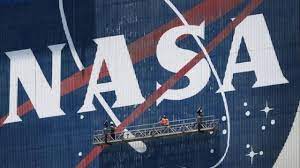NASA convened its inaugural public gathering on the subject of UFOs, officially termed “unidentified aerial phenomena” (UAPs), one year after initiating an investigation into unexplained sightings. The space agency broadcasted a four-hour hearing on Wednesday, featuring an independent panel of experts committed to transparency. Comprised of 16 scientists and other specialists handpicked by NASA, the team included retired US astronaut Scott Kelly, who spent nearly a year in space.

NASA specified that the primary objective of the public session, held at the agency’s headquarters in Washington, DC, was to conduct “final deliberations” prior to the team’s forthcoming report, scheduled for release in late July, as announced by panel chair David Spergel. In his opening remarks, Spergel summarized their key finding as the necessity for high-quality data. He also highlighted the current deficiency of systematic and cohesive data collection efforts on UAPs, which are presently scattered across different agencies, often employing instruments that are not calibrated for scientific data gathering.
Dan Evans, a senior research official at NASA’s science unit, stated that the panel still has several months of work ahead of them. He also revealed that panel members have faced online abuse and harassment since commencing their investigation.
This panel represents the first-ever inquiry of its kind under the auspices of the US space agency, exploring a subject matter that was once solely the secretive domain of military and national security officials.

The NASA study is distinct from a newly formalized investigation conducted by the Pentagon, focusing on unidentified aerial phenomena documented in recent years by military aviators and analyzed by US defense and intelligence authorities.
Both the parallel efforts by NASA and the Pentagon, characterized by some degree of public scrutiny, signify a turning point for the US government. For decades, the government had dismissed, debunked, and discredited reports of unidentified flying objects—often associated with the notion of flying saucers and extraterrestrial life—dating back to the 1940s.
Although NASA’s scientific mission appeared to promise a more open-minded approach to the subject, the agency clarified from the outset that it was not jumping to any conclusions. Last June, when announcing the formation of the panel, NASA explicitly stated, “There is no evidence UAPs are extraterrestrial in origin.” Panel member Evans reiterated this point after the meeting, asserting that there is absolutely no convincing evidence linking unidentified objects to extraterrestrial life.
US defense officials confirmed that the Pentagon’s recent endeavors to investigate such sightings have resulted in numerous new reports currently under examination, although most remain unexplained.
The director of the Pentagon’s newly established All-domain Anomaly Resolution Office acknowledged that the existence of intelligent alien life has not been ruled out. However, no sighting has produced evidence of extraterrestrial origins.
NASA’s Evans highlighted that the live stream of the meeting attracted significant trolling and further mentioned the occurrence of online abuse directed at several committee members. He emphasized that such harassment undermines the scientific process and reinforces the stigma surrounding the topic of UAPs. NASA’s security team is addressing this issue. Evans added that it is precisely this rigorous, evidence-based approach that allows for the differentiation between fact and fiction.






